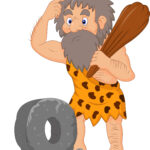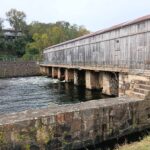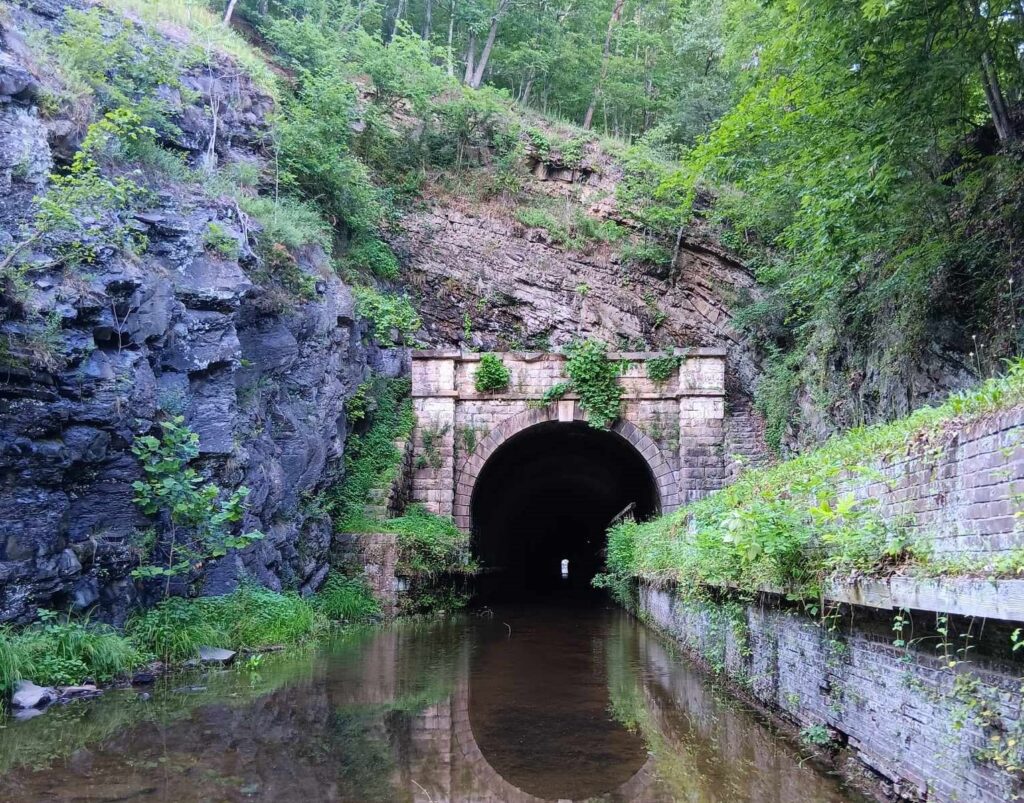
In man’s earliest days of walking upright millions of years ago, he struggled to find improved methods of moving goods and people around. Initially, this was done on foot. People walked everywhere they went and often carried the young or infirm. Goods could be transported in packs worn on their backs or in slings across their bodies.
As animals became more domesticated, horses, donkeys, camels, and llamas were used. At first, goods were strapped across the animal’s back like modern saddle bags. Once people learned how to ride, travel became more accessible and quicker.
Prior to the invention of the wheel, men cut trees and strapped them together, forming a sledge or dragging device. This could be pulled by the animals and made hauling heavy goods possible. It also enabled them to load more items onto the sled.
 However, the invention of the wheel in Mesopotamia around 3500 BCE revolutionized ground transportation. Early wheeled vehicles included carts and chariots pulled by animals. These transportation systems laid the groundwork for more advanced methods, and man’s ability to travel grew rapidly as roads, rails, and aircraft became commonplace.
However, the invention of the wheel in Mesopotamia around 3500 BCE revolutionized ground transportation. Early wheeled vehicles included carts and chariots pulled by animals. These transportation systems laid the groundwork for more advanced methods, and man’s ability to travel grew rapidly as roads, rails, and aircraft became commonplace.
Last week’s post was on the development of the early steam locomotives, which enabled people to move from place to place much quicker. However, I love the water and going by boat, so today, I will focus on the use of water for transportation.
One of the earliest and most straightforward modes of water travel was the raft. Made from logs lashed together by reeds, it allowed people and animals to float down a river. Later, they used poles to guide themselves to a specific location. Many ancient societies used dugout canoes carved from tree trunks.
Ancient boats were constructed of reeds or branches with treated animal skins stretched over a wooden frame. The ancient Egyptians  built theirs from papyrus reeds. These were lightweight and held a few people or goods. The design for coracles, such as you see in Wales and other parts of Great Britain, dates back thousands of years. Surprisingly, these half-shell-shaped vessels are more stable than they would appear. They were often used for fishing, but goods could be paddled across a body of water if necessary.
built theirs from papyrus reeds. These were lightweight and held a few people or goods. The design for coracles, such as you see in Wales and other parts of Great Britain, dates back thousands of years. Surprisingly, these half-shell-shaped vessels are more stable than they would appear. They were often used for fishing, but goods could be paddled across a body of water if necessary.
The development of sails allowed for more efficient long-distance water travel. Early civilizations, such as the Egyptians, Phoenicians, and Greeks, were known for their sailing vessels. These vessels could not only travel further but also carry more goods and people.
The first known canals were used for irrigation more often than travel or shipping. In ancient times, the Sumerians, who lived in the area known today as Iraq, constructed the earliest canals around 4000 BCE. These were primarily used for irrigation, transforming the arid landscape into fertile agricultural land.
The ancient Egyptians built canals to divert water from the Nile River to irrigate their fields. In the 6th century BCE, Pharaoh Necho II wanted to connect the Nile with the Red Sea. While this effort was never completed, it laid the groundwork for the later Suez Canal.
However, the Grand Canal of China opened the door to large-scale transportation by canal. Begun in the 5th century BCE, it saw significant expansion over the next century, unifying existing smaller segments. The Grand Canal facilitated movement between the north and the south.
Other civilizations, including the Greeks and Romans, soon took up these efforts. While the Corinthian Canal was not completed until the 19th century, the idea was developed around 600 BCE to replace the Diolkos. This paved trackway allowed ships to cross the Isthmus of Corinth over land. Romans, known for their engineering skill, built many canals in the areas they conquered. The Fossa Carolina, though unfinished, was begun under Charlemagne to connect the Rhine and Danube rivers.
 Here in the United States, we are not without canals of our own, several of which I have enjoyed walking along. In 1824, a proposal was presented to connect the Savannah and Ogeechee rivers, creating a transportation link that eased the movement of goods, mainly cotton and timber, between the interior regions and the port of Savannah. Opening in 1831, the Savannah-Ogeechee Canal featured a series of locks and dams to manage water flow and elevation changes over its 16.5-mile length. The canal quickly became a vital transportation route and reduced the reliance on overland transport, making shipping more efficient and cost-effective.
Here in the United States, we are not without canals of our own, several of which I have enjoyed walking along. In 1824, a proposal was presented to connect the Savannah and Ogeechee rivers, creating a transportation link that eased the movement of goods, mainly cotton and timber, between the interior regions and the port of Savannah. Opening in 1831, the Savannah-Ogeechee Canal featured a series of locks and dams to manage water flow and elevation changes over its 16.5-mile length. The canal quickly became a vital transportation route and reduced the reliance on overland transport, making shipping more efficient and cost-effective.
In the 1820s, a design to bypass the rapids on the Savannah River near Augusta, Georgia, was proposed. The idea gained traction, and initial surveys were conducted in the 1930s. However, The Augusta Canal was not completed until 1847. It was nine miles long and ran parallel to the Savannah River. Not only did it improve shipping, but it provided a source of water power to run the mills and factories in Augusta.
initial surveys were conducted in the 1930s. However, The Augusta Canal was not completed until 1847. It was nine miles long and ran parallel to the Savannah River. Not only did it improve shipping, but it provided a source of water power to run the mills and factories in Augusta.
The most recent canal I visited was the C&O Canal, or the Chesapeake and Ohio Canal. This waterway played a significant role in the economic development of the United States during the 19th century by connecting the Chesapeake Bay with the Ohio River, creating a  link between the eastern seaboard and the western territories. President John Quincy Adams turned the first spade of earth at a groundbreaking ceremony in Georgetown on July 4, 1828. The ambitious project would span nearly 185 miles from Washington, D.C., to Cumberland, Maryland, and face many challenges, including rugged terrain, which forced engineers to build numerous locks, aqueducts, and tunnels to navigate the varied landscape. The C&O was completed in 1850 and featured 74 lift locks, 11 aqueducts, and the Paw Paw Tunnel, an engineering achievement over 3,100 feet long.
link between the eastern seaboard and the western territories. President John Quincy Adams turned the first spade of earth at a groundbreaking ceremony in Georgetown on July 4, 1828. The ambitious project would span nearly 185 miles from Washington, D.C., to Cumberland, Maryland, and face many challenges, including rugged terrain, which forced engineers to build numerous locks, aqueducts, and tunnels to navigate the varied landscape. The C&O was completed in 1850 and featured 74 lift locks, 11 aqueducts, and the Paw Paw Tunnel, an engineering achievement over 3,100 feet long.
Not long after we moved to Maryland, Dave and I explored the lower section of the canal, and recently, on the dig near Cumberland, I checked out some of the northern reaches, including the Paw Paw Tunnel, which shaved eight miles off a route going up and over the mountains. While we most likely would not do 185 miles in a stretch. I want to hike sections of it and possibly spend the night in one of the lock houses available through the National Park Service.
checked out some of the northern reaches, including the Paw Paw Tunnel, which shaved eight miles off a route going up and over the mountains. While we most likely would not do 185 miles in a stretch. I want to hike sections of it and possibly spend the night in one of the lock houses available through the National Park Service.

As always a great article, you always manage to find some great nuggets of information. Keep them coming Carol.
Thanks. I love finding those nuggets!